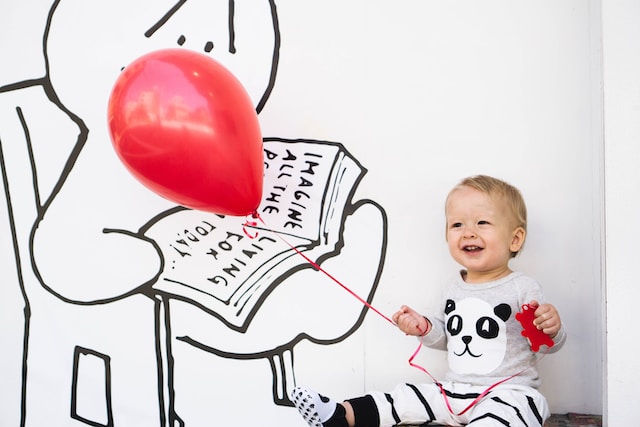Children don’t come with a manual. As parents, we quickly realise this truth, especially when raising bi-/multilingual children across countries, cultures and languages. While a new TV or a stove comes with an encyclopaedic manual in multiple languages, when we leave the hospital with our newborn, we’re left to navigate the complexities of parenthood on our own. Where is the so-called guidebook for this extraordinary journey? Shouldn’t there be step-by-step instructions or at least a cheat sheet? Unfortunately, there isn’t one, but that doesn’t stop us from diving in headfirst, does it?! Why? It’s simple – we want the best for our children and we’re willing to go the extra mile. Many extra miles, in fact, when it comes to raising a child with more than one language. And amidst all the challenges, one thing keeps us fuelled – watching our children’s language skills blossom.
There is a lot written and advertised about raising children with more than one language. However, beneath the surface of this wealth of information, there are certain facts that are often left unspoken. These, however, hold valuable insights and lessons that can shape our approach as parents and educators. “Do this; try that; this strategy is the way to go because it’s worked for so many; you need to talk to my best friend, she will tell you what to do… “ But which strategy should you resort to when you are at your wits end and feel like giving up is the best one?!
That’s why I believe it’s about time to unleash some long-overdue truth bombs that are rarely addressed directly. We need to dive deep into the realities of raising bi-/ multilingual children because, let’s face it, that’s where the real magic happens.
- Language mixing is normal.
Parents are often worried that language mixing can be detrimental for the linguistic development of their children. Either when their children mix languages or when the parents themselves happen to “slip” and step off the beaten path of the one-parent-one-language routine, for example. But none of these are true. Bi-/ Multilingual children often engage in language mixing and use words or phrases from all their languages in their communication. In fact, it would be odd if they didn’t! Why? Because it is a natural part of language development and it should be seen as a positive sign of their growing language skills. It allows them to communicate meaning their way, to express themselves effectively, drawing from all the linguistic resources available to them. It is important for parents and educators to understand that language mixing does not indicate confusion or a lack of language proficiency. Just the opposite – it shows how resourceful children are!
2. Balanced bi-/ multilinguals are unicorns.
If I had a Euro every time I encountered concerns about balanced bi-/ multilingualism and met parents who believed their children were failing in their language development because they couldn’t effortlessly translate between languages or discuss the same topics fluently across their linguistic spectrum, I would be a wealthy woman. But here’s the truth: children growing up with multiple languages will naturally exhibit varying levels of proficiency and fluency in each language. And guess what – that’s perfectly okay! The journey of bi-/ multilingualism is influenced by a multitude of factors, including exposure, language use at home and in the community, individual differences, personal interests and experiences. It’s a rollercoaster ride of ups and downs and the secret to a smooth ride lies in recognising and accepting this reality.
3. Language dominance can shift.
What is a ‘dominant language’? It is the language your child is most proficient in and / or uses most frequently. Often, it is not the first one they’ve learned. Your child’s dominant language might shift over time due to various factors that steer the process. One of the most common factors is going to school in a language-dominant environment that is different than the home language(s). And it is also a big part of this rollercoaster ride!
4. Language development is a dynamic process.
Even though we’d really really like it to be a linear process, bi-/ multilingual language development is anything but. Just the opposite – it is a highly dynamic journey that can involve periods of rapid progress, plateaus and even temporary regression. Most bi-/ multilingual children go through phases where they exhibit stronger language skills in one language over the other(s). These fluctuations are normal and should not be a cause for concern. Can I do something about it as a parent? You sure can! Keep providing consistent exposure to all languages you’ve decided to include in your Family Language Plan; keep maintaining a supportive language-rich environment and encouraging bi-/ multilingualism in your day-to-day.
5. Bi- / Multilingualism goes beyond language.
I will never get tired of saying that raising children with more than one language is never “just” about language. It’s a holistic experience that encompasses cultural awareness, identity, socio-emotional and cognitive development. Growing up in a bi-/ multilingual environment offers children far more than linguistic fluency and / or proficiency. These children become empathetic individuals, open to diverse cultures and perspectives, who are more skilled at tolerating ambiguity. They develop flexibility and adaptability, wholeheartedly appreciating the richness that comes with different ways of communicating.
Embracing these can help you – parent, caregiver and educator – to better understand and support your bi-/ multilinguals on their unique language journey.
Share with us, which one was the least obvious to you? Which one(s) have you been struggling with?
Image by Alyssa Stevenson on unsplash.com



